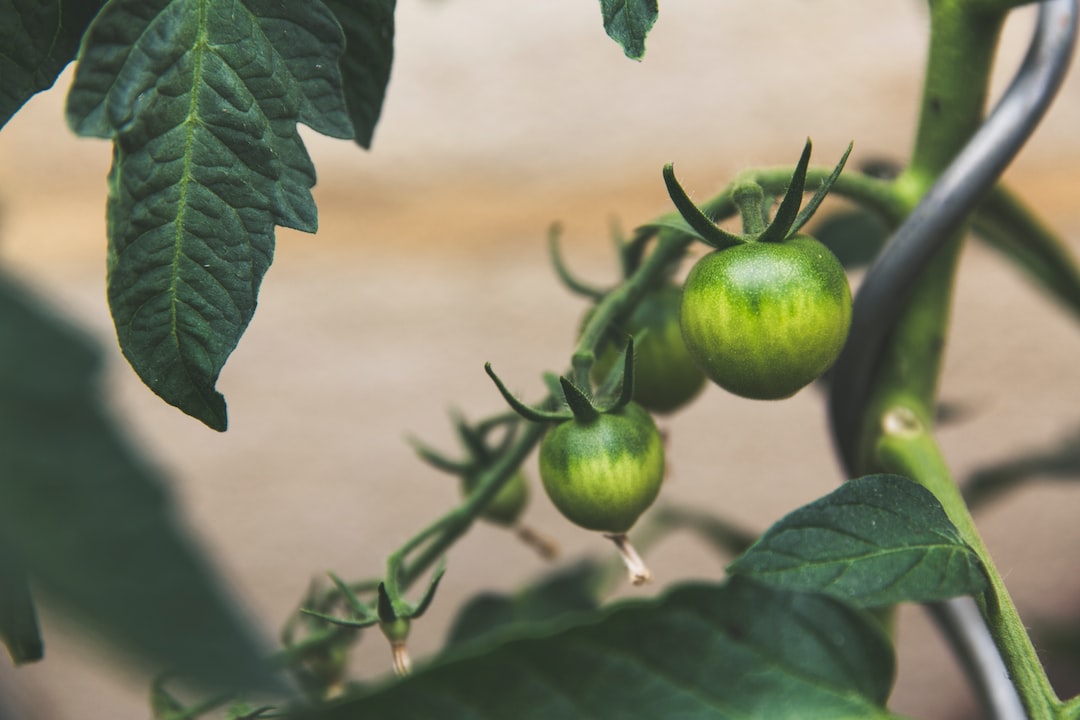Harvesting Broccoli: A Guide to Knowing When Your Crop is Ready

Proper broccoli harvesting techniques are essential for ensuring a successful and bountiful harvest. Broccoli is a popular and nutritious vegetable that requires careful attention throughout its growth and development. Harvesting broccoli at the right time is crucial to ensure that the heads are mature and flavorful. In this article, we will explore the different stages of broccoli growth, how to identify the right time to harvest, factors that affect harvesting time, how to check for maturity in broccoli heads, signs that indicate readiness for harvest, tips for harvesting without damaging the plant, the best tools for harvesting, how to store freshly harvested broccoli, maximizing yield with proper techniques, common mistakes to avoid, and final thoughts and tips for successful broccoli harvesting.
Key Takeaways
- Broccoli should be harvested when the heads are firm and tight.
- Factors that affect the harvesting time of broccoli include temperature, sunlight, and variety.
- To check for maturity in broccoli heads, look for a dark green color and a diameter of 4-7 inches.
- Signs that indicate broccoli is ready to be harvested include a tight head and no yellowing or flowering.
- To harvest broccoli without damaging the plant, use a sharp knife and cut the stem at a 45-degree angle.
Understanding the Broccoli Harvesting Process
To understand the importance of proper broccoli harvesting techniques, it is essential to have a basic understanding of how broccoli grows and develops. Broccoli belongs to the Brassica family and is a cool-season crop. It thrives in temperatures between 60°F and 70°F (15°C and 21°C). Broccoli plants go through several stages of growth before reaching maturity.
The first stage is seed germination, where the seeds sprout and develop into seedlings. Once the seedlings have grown a few inches tall, they are ready to be transplanted into the garden or larger containers. The second stage is vegetative growth, where the plants focus on developing leaves and establishing a strong root system. During this stage, it is important to provide adequate water and nutrients to support healthy growth.
The third stage is head formation, which is when the central head of broccoli starts to develop. This is the most critical stage for determining when to harvest. The central head should be firm and compact before harvesting. If left on the plant too long, it may start to flower and lose its flavor.
Identifying the Right Time to Harvest Broccoli
Harvesting broccoli at the right time is crucial for ensuring the best flavor and texture. Harvesting too early can result in small heads that haven’t fully developed, while harvesting too late can lead to tough and bitter-tasting broccoli. The ideal time to harvest broccoli is when the central head is fully formed, firm, and compact. It should be a dark green color and have a tight appearance.
To determine if the broccoli heads are ready for harvest, you can gently squeeze them. If they feel firm and dense, they are likely ready to be harvested. Additionally, you can check the color of the heads. They should be a deep green color, indicating that they are mature and ready to be picked.
Factors that Affect the Harvesting Time of Broccoli
| Factors | Description |
|---|---|
| Temperature | Higher temperatures can accelerate the growth of broccoli, resulting in a shorter harvesting time. |
| Water | Adequate water supply is necessary for the growth of broccoli. Insufficient water can delay the harvesting time. |
| Soil nutrients | Broccoli requires a balanced supply of nutrients for optimal growth. Lack of nutrients can delay the harvesting time. |
| Plant spacing | Proper plant spacing allows for adequate air circulation and sunlight exposure, resulting in a shorter harvesting time. |
| Pest and disease control | Effective pest and disease control can prevent damage to the broccoli plants, resulting in a shorter harvesting time. |
Several factors can affect the timing of broccoli harvesting. One of the most significant factors is weather conditions. Broccoli thrives in cool temperatures, so if the weather becomes too hot, it can cause the heads to mature more quickly. On the other hand, if the weather becomes too cold, it can slow down the growth process.
Soil conditions also play a role in determining when to harvest broccoli. Broccoli requires well-draining soil that is rich in organic matter. If the soil is too compacted or lacks nutrients, it can affect the growth and development of the plant.
Other factors that can impact broccoli growth and development include pests and diseases. Insects like aphids and cabbage worms can damage the plants and affect their ability to produce healthy heads. Diseases such as clubroot and black rot can also impact the overall health of the plant.
How to Check for Maturity in Broccoli Heads
Checking for maturity in broccoli heads is an important step in determining when to harvest. There are several indicators you can look for to ensure that the heads are mature enough for picking.
One indicator of maturity is firmness. Gently squeeze the heads to see if they feel firm and dense. If they are still soft or have a spongy texture, they are not yet ready for harvest. The heads should have a solid feel when gently pressed.
Color is another indicator of maturity. Mature broccoli heads should be a dark green color. If the heads are still light green or have a yellowish tint, they are not yet fully mature. Wait until they have reached a deep green color before harvesting.
Signs that Indicate Broccoli is Ready to be Harvested

In addition to checking for firmness and color, there are other signs that indicate broccoli is ready to be harvested. One of these signs is the appearance of small yellow flowers. When broccoli heads start to produce small yellow flowers, it is a clear indication that they are reaching maturity and should be harvested soon.
Another sign to look for is the size of the central head. Once the central head has reached a desirable size, it is ready to be picked. The size will vary depending on the variety of broccoli you are growing, so it is important to know the specific characteristics of the variety you are cultivating.
Tips for Harvesting Broccoli Without Damaging the Plant
Harvesting broccoli without damaging the plant is essential for ensuring continued growth and development. To harvest broccoli without causing harm, it is important to use a sharp knife or scissors to cut the stem cleanly just below the head. Avoid pulling or twisting the head, as this can damage the plant and inhibit future growth.
When cutting the stem, make sure to leave a few inches of stem attached to the head. This will help preserve the freshness and quality of the harvested broccoli. It is also important to avoid cutting too close to the head, as this can result in damage and spoilage.
The Best Tools for Harvesting Broccoli
The best tools for harvesting broccoli include a sharp knife or pruning shears. These tools allow for clean and precise cuts, minimizing damage to the plant. When choosing a knife or shears, opt for ones with a sharp blade that can easily cut through the stem.
It is important to keep the tools clean and sharp to ensure efficient and effective harvesting. Dull blades can crush the stem instead of making a clean cut, which can lead to damage and spoilage.
How to Store Freshly Harvested Broccoli
Properly storing freshly harvested broccoli is crucial for maintaining its freshness and crispness. To store broccoli, start by removing any leaves or debris from the heads. Rinse them under cold water to remove any dirt or insects.
Once cleaned, wrap the heads in a damp paper towel or place them in a perforated plastic bag. This will help retain moisture while allowing for proper airflow. Store the wrapped heads in the refrigerator’s crisper drawer, where they can stay fresh for up to a week.
Maximizing Your Broccoli Yield with Proper Harvesting Techniques
Proper harvesting techniques can help maximize your broccoli yield and encourage continued growth and development of the plant. By harvesting broccoli at the right time and using the correct tools and methods, you can ensure that each head is of high quality and flavor.
Harvesting broccoli at the right time allows for the plant to continue producing side shoots, also known as “florets.” These side shoots can be harvested after the central head has been picked, providing an extended harvest period. By removing the central head at the right time, you are encouraging the plant to redirect its energy towards producing more side shoots.
Common Mistakes to Avoid When Harvesting Broccoli
There are several common mistakes that people make when harvesting broccoli. One of these mistakes is harvesting too early. If you pick broccoli heads before they have fully developed, they may not have a desirable size or flavor. It is important to be patient and wait until the heads are firm and compact before harvesting.
Another mistake is waiting too long to harvest. If broccoli heads are left on the plant for too long, they can start to flower and lose their flavor. It is important to regularly check the heads for signs of maturity and harvest them as soon as they are ready.
Lastly, using improper tools or techniques can result in damage to the plant. Avoid pulling or twisting the heads, as this can cause harm and inhibit future growth. Instead, use a sharp knife or scissors to make clean cuts just below the heads.
Proper broccoli harvesting techniques are essential for ensuring a successful and bountiful harvest. By understanding the different stages of broccoli growth, identifying the right time to harvest, checking for maturity in broccoli heads, looking for signs of readiness, using proper tools and techniques, and storing freshly harvested broccoli correctly, you can maximize your yield and enjoy delicious and nutritious broccoli throughout the growing season. Avoiding common mistakes and following these tips will help you become a successful broccoli harvester. So get out there, tend to your broccoli plants with care, and enjoy the fruits (or rather, vegetables) of your labor!



